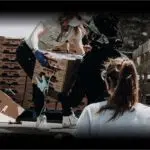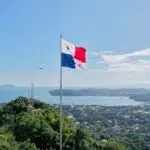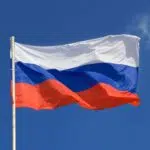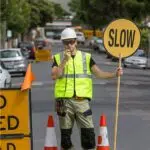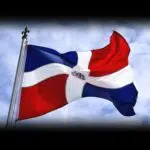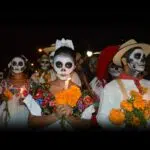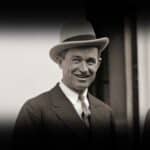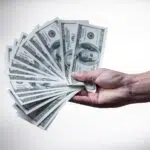Russia’s Day of Unity is celebrated on November 4 every year, commemorating a popular uprising in Moscow against Polish forces in 1612. Today, Russia celebrates the unity of its diverse multi-ethnic society. It is a day with deep historical significance, yet one of the newest holidays in Russia. Unity Day is synonymous with beloved national heroes Kuzma Minin and Prince Dmitry Pozharsky. Who are they? And why don’t more people know about another popular uprising in Russia? As the history of any region has shown us, the answers are complex and need a deep dive.
History of Russia's Day of Unity
The origins of Russia’s Day of Unity go back to ‘Smuta,’ a historically turbulent period when political unrest was at its peak in Russia. Wars with Poland and Sweden weakened an already struggling economy. Sensing vulnerability, Poland took advantage of civil unrest and invaded Russia. They occupied Moscow for two years until 1612 when a historic uprising took place. Leading the resistance were Kuzma Minin, a merchant from Nizhny Novgorod, and Dmitry Pozharsky, a respected and high-ranking prince. Together, they led the people of Moscow into a victorious battle, freeing the city from occupation. Minin and Pozharsky became national heroes. In 1613, Tsar Mikhail Romanov declared the day a national holiday to symbolize the strength of Russian unity. Russia continued celebrating the Day of Unity until 1917 when a new force arrived — the Soviet Union.The rise of the Soviet Union put an end to the Russian monarchy and, consequently, Russia’s Day of Unity lost favor. It was the dawn of a new era and ideals. Occasions like the Day of Unity were relics of an oppressive past. There was no space for it in the Soviet Union. The day faded from collective memory, and the Bolshevik state established an official day to commemorate the November 7 revolution instead.But the dreams of a mighty Soviet Union were not meant to be. In 1991, the disintegration of the Soviet Union paved the way for modern Russia. Once again, new values would guide the nation. Gone but not entirely forgotten, the Day of Unity underwent several transformations during this period. It was called the Day of Accord and Conciliation and later became one of the Days of Military Honor. In 2005, President Vladimir Putin reintroduced Russia’s Day of Unity and removed November 7 from the list of official Russian holidays. Since 2005, Day of Unity has celebrated Russian solidarity and patriotism, cutting across ethnicities.
Russia's Day of Unity timeline
Russia reels under ongoing wars, civil unrest, and a crippling economy.
Kuzma Minin and Dmitry Pozharsky lead a revolution against the Polish occupation.
Aristocracy and Russia’s Unity Day come to an end with the rise of the Soviet Union.
Russia reinstates Day of Unity to strengthen national solidarity and patriotism.
Russia's Day of Unity FAQs
What is Russian Victory Day?
Victory Day in Russia is on May 9. The day commemorates the Soviet Union’s victory against Germany in World War II.
Why is Day of Unity celebrated in Russia?
Day of Unity celebrates Russia’s historical popular uprising against invaders in 1612. It’s a day when Moscow ousted the Polish-Lithuanian Commonwealth forces.
Do the Russians still celebrate May Day?
The spirit of May Day celebrations in Russia has evolved under various governments. It used to be International Workers’ Day in the erstwhile Soviet Union with parades and mega festivities. Celebrations today are low-key and involve worker protests and demonstrations instead.
Russia's Day of Unity Activities
-
Learn about the people of Russia
Today is an excellent day to read up on Russia’s more than 120 ethnic groups. Besides Russians, the country comprises a significant population of Tartars, Bashkirs, and Ukrainians. Numerous minority groups such as the Cossacks, Chukchi, and Chuvash call Russia home.
-
Attend the festivities
Moscow comes alive on Unity Day with fireworks, cultural events, concerts, and fireworks. State celebrations include flag hoisting and speeches by public figures on patriotism.
-
Visit a Russian Orthodox Church
The Feast of Our Lady of Kazan coincides with Unity Day in Russia. Orthodox Christians in Russia attend a church service to honor her.
5 Facts About Red Square That Will Blow Your Mind
-
One statue to unite them all
The Red Square has only one statue — that of Kuzma Minin and Prince Dmitry Pozharsky as ultimate symbols of Russia’s unity.
-
What ‘red’ really means
In old Russian, red or ‘krasnaya’ meant ‘beautiful’ and had no political connotations.
-
The site of Vladimir Lenin’s mummified remains
Lenin’s body has been on display at the Red Square since 1930.
-
The sinister origins of the Tsar’s Towers
Ivan the Terrible built a wooden turret to spy on his subjects from the enchanting Tsar’s Tower.
-
Masterpieces destroyed and rebuilt
Although the Resurrection Gates and the Kazan Cathedral fell to political unrest, the country restored both to their former glory.
Why We Love Russia's Day of Unity
-
A different chapter of Russian history
Few people know of Russia outside the Cold War or the Great Wars. Russia’s Day of Unity offers new insights into a fascinating country.
-
The message
More than ever, the world needs examples of unity in diversity. National days reinforce the message and will hopefully translate into action.
-
The heroism and courage
Russia’s Day of Unity pays tribute to the courage of two national heroes. Their story will continue to inspire generations to come.
Russia's Day of Unity dates
| Year | Date | Day |
|---|---|---|
| 2022 | November 4 | Friday |
| 2023 | November 4 | Saturday |
| 2024 | November 4 | Monday |
| 2025 | November 4 | Tuesday |
| 2026 | November 4 | Wednesday |







